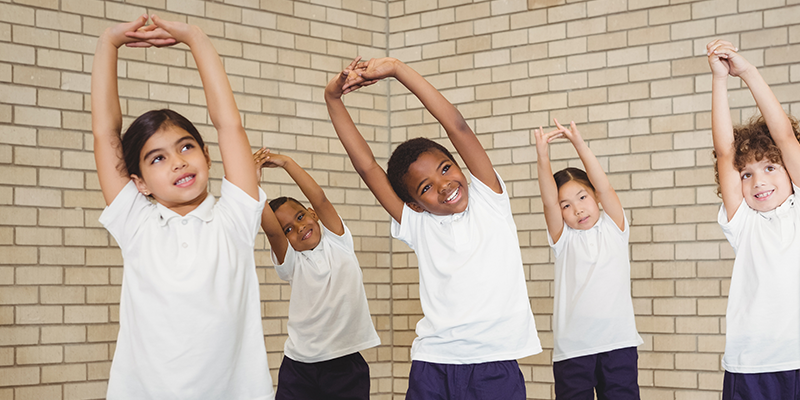Posted On: July 1, 2022 by NARA in: Juvenile Tips Wellness Programs

Juvenile idiopathic arthritis is the most common type of arthritis in children under the age of sixteen. It can cause severe joint pain, swelling and stiffness. Regular exercise can help children and teenagers manage their juvenile idiopathic arthritis. During exercise, the body produces endorphins which help to limit anxiety, stiffness, and reduce pain. We are sharing several types of stretches and exercises to help with JIA.
Range of Motion Exercises
Range of motion refers to how far you can move or stretch a part of your body, such as a joint or muscle. Children and teenagers may hold their joints in a position of comfort if they have arthritis. Range of motion exercises work to improve joint motion and reduce stiffness. They are gentle exercises that can be done safely even when joints are swollen or painful. These exercises are most effective when performed daily.
Strengthening Exercises
Strengthening exercises help to maintain muscles and improve muscle strength. Strong muscles help support joints, which is especially important for children and teenagers with JIA. There are isometric and isotonic exercises to help. In isometric exercises, the muscles tighten without moving the joint. With isotonic exercises, you use your muscles while moving your joints.
Stretching
Stretching makes everyday activities easier, reduces stiffness and helps maintain flexibility in your joints and muscles. To improve flexibility, stretching should be done regularly, three to five times a week. Yoga and pilates are great exercises for stretching.
Cardiovascular Fitness
Cardiovascular fitness allows the lungs to provide oxygen to the blood, heart, and muscles more easily. Cardiovascular exercises especially help kids and teenagers with juvenile idiopathic arthritis because they help children maintain a healthy weight, improve mood and sleep, and control pain. These exercises must maintain an elevated heart rate to be effective.
Children and teenagers with juvenile idiopathic arthritis need to exercise and stretch to manage their pain and stiffness. We recommend starting slowly and gradually building strength and flexibility, but it is important to speak with your child’s physician for a recommendation on what is right for them. If you have any questions, visit our website or contact us.

0 comments